Inbound marketing has long positioned itself as the antithesis of interruptive marketing. Where once the de rigueur method of finding prospects was intrusive—be it through cold calling, television and radio ads or direct mail—the conventional wisdom of today is to offer something of value in order to be found.
That’s why pay-per-click (PPC) advertising may seem inherently at loggerheads with inbound, since it’s a way of buying attention outright instead of earning it. But dismissing PPC as something archaic and incompatible with inbound strategy is missing the bigger picture.
In reality, PPC has an important place as a component in inbound marketing. It’s a potent driver of traffic and is an effective technique for gathering a lot of leads in short order. Let’s take a look at why PPC works so well in the context of a larger inbound strategy.

PPC is instrumental in scaling quickly
For B2B companies that are either starting out or feel their overall pool of leads is lacking, pay-per-click makes sense as a method of identifying and attracting prospective buyers. Since PPC can be an easy way to get to the top of search results, B2B sellers can often build their prospect lists significantly with smart keyword purchases. But it’s very important not to solely assess your PPC efforts on quantity.
The way for PPC to work most effectively for your B2B lead-gathering is by taking a couple of cues from the playbook of inbound methodology. Foremost is the adage “know thy customers.” Target PPC ad buys to attract sales-qualified leads that match your buyer persona as opposed to a large proportion of searchers who are ultimately uninterested or unlikely to purchase.
Proper keyword targeting comes from thorough and accurate buyer personas. By taking what you understand about your ideal prospects—those you can be most assured of converting—and what they are asking about in the awareness stage, you can hone in on the right keywords for which to pay. That way the amplifying effect of PPC has the most impact, because any searcher looking for those same solutions (by using the same or a similar string of keywords) will see you at the top of the results.
It works well as a road sign of sorts
One of the most important ways PPC helps inbound campaigns is by promoting and boosting the visibility of relevant content offers. Where the previous point focuses on gathering leads in the awareness stage, PPC efforts focused on specific offers also bolster the efficacy of your strategies for those later in the buyer’s journey.
The further along a lead is, the more specific their questions become. The better you are at anticipating their needs, the more effectively you can target keywords for different points in the process. When prospects are at the consideration or decision stage, their searches become more focused on which option is better, what the benefits are and what the cost and ROI should be. Tailor your PPC landing pages to each of these queries and get right to the point in your content.
This also means better tracking and measurability. With Google AdWords, analytical data and insights spring readily from the results of your PPC spend. This way, you’re not only tracking click rates on PPC keywords, you’re also able to assess bounce rates on your landing pages, responses and time spent on your website. These measurable insights will tell you more about whether the content on your landing pages is working as effectively as the keywords that lead people to them.
It can be more involved than investing in Adwords
Most of what we’ve talked about here has focused on bidding on and purchase keyword strings through Google’s Adwords. That’s for good reason, as 72 percent of buyers start their journey with a Google search. But PPC is hardly limited to that platform.
Sponsored content is particularly handy in the latter stages of the B2B buyer’s journey. It’s not just the content itself that can be more focused on the needs and concerns of nurtured leads—the platform you choose for purchasing space on should be one you know your ideal prospects are using. Whether that means promoting a relevant case study in Linkedin’s newsfeed or linking insightful commentary on Twitter, consider buying attention in the corners of the internet where the prospects you’re looking for often congregate.
PPC is not anathema to the tenets of inbound, even though it may be branded as such by some. In reality, it is an often-helpful supplement to your efforts and an effective litmus test for assessing your content’s ability to move buyers along the purchasing process. When used shrewdly in the context of a larger B2B campaign, PPC can boost your ROI, conversion rates and ultimately your overall sales. ![]()







 By
By 